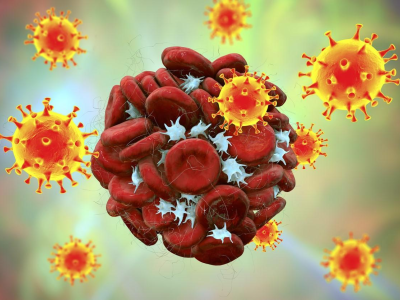Feb 28, 2012 (CIDRAP News) – An advisory group to the US Food and Drug Administration (FDA) today selected two new strains for the 2012-13 seasonal flu vaccine, based on a recent recommendation from the World Health Organization (WHO).
Today's FDA Vaccines and Related Biological Products Advisory Committee (VRBPAC) vote allows pharmaceutical companies that make seasonal flu vaccine for the US market to proceed with their production steps. It takes several months to develop vaccine viruses based on the circulating strains, grow large quantities in chicken eggs, and formulate them into vaccines.
In considering the strains, VRBPAC heard detailed information from experts on circulating strains, US and global flu surveillance, and vaccine manufacturing. They also received updates on other technical issues such as vaccine effectiveness, vaccine response, and the availability of vaccine viruses and reagents.
They heard the most current information on the topic from Nancy Cox, PhD, director of the Center for Disease Control and Prevention's (CDC's) influenza division, who recently took part in the WHO vaccine strain selection meeting in Geneva.
VRBPAC's vote follows the WHO's Feb 23 recommendation for next season's Northern Hemisphere flu vaccine, which included changing two of the three strains—the H3N2 and the B components.
The WHO recommended strains similar to the following for the 2012-13 season:
- A/California/7/2009 (H1N1)pdm09, the pandemic strain
- A/Victoria/361/2011 (H3N2), which replaces A/Perth/16/2009
- B/Wisconsin/1/2010, which replaces B/Brisbane/60/2008 and is of the Yamagata lineage
The WHO also recommended that countries considering using influenza B Victoria lineage virus, either in trivalent vaccines or quadrivalent vaccines containing two influenza B strains, use a vaccine similar to B/Brisbane/60/2008, which is a component of this year's seasonal flu vaccine.
The H3N2 virus has dominated the Northern Hemisphere's flu season, with co-circulation of fewer numbers of the 2009 H1N1 virus and influenza B. Though few influenza B samples have been available for testing, some parts of the world, such as the United States and Europe, have documented a fair number of Yamagata lineage viruses, which are not a component of this season's vaccine.
During VRBPAC's vote today, members approved a statement noting that if a quadrivalent seasonal flu were available, the second influenza B strain would be B/Brisbane/60/2008, the option suggested by the WHO.
At today's meeting, representatives from two vaccine companies, GlaxoSmithKline and MedImmune, said quadrivalent vaccines containing two influenza B strains have gone through clinical trials, but they said they don't anticipate clearance in time for the 2012-13 flu season.
MedImmune filed for approval for a quadrivalent version of its trivalent nasal spray vaccine FluMist in the second quarter of 2011. It announced in July 2011 that the FDA had received its supplemental licensing application.
Researchers often have difficulty predicting which influenza B strain will circulate in any given season, and, to simplify the process, some experts have supported the idea of quadrivalent vaccine that contains strains from both the Yamagata and Victoria lineages.
Even though analysis of circulating flu strains has improved vastly over the past several years, several VRBPAC members today said picking the influenza B strain is still difficult, calling the process a "coin flip" and a "crapshoot."
See also:
Feb 23 CIDRAP News story "WHO picks two new strains for next season's flu vaccine"
Jul 18, 2011, CIDRAP News story "MedImmune seeks license for 4-strain flu virus"


















